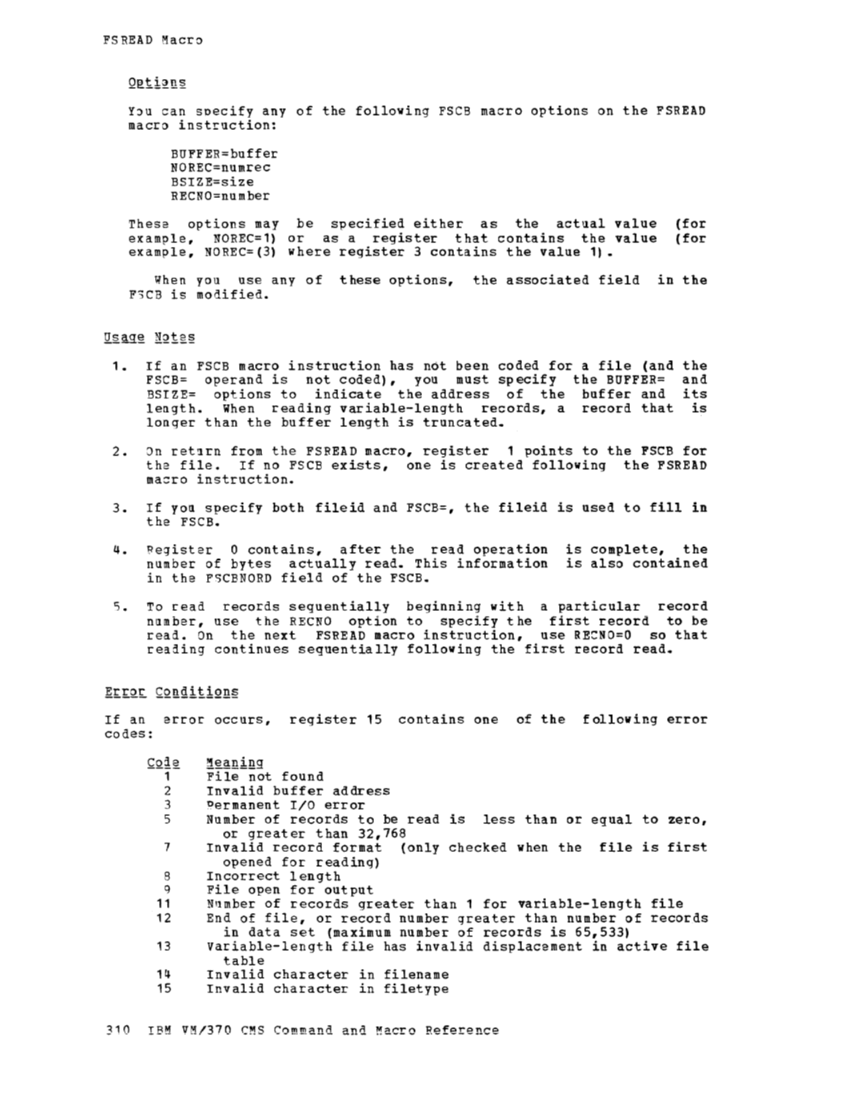the
a file to be opened
If an error occurs, register 15 contains one of the following error
codes:
28
36
Invalid filemode
File does not exist
Disk not accessed
FSREAD
an
fileid
------------------------.-------------------------------,
FSREAD
{
fileid[,FSCB=fscb]
____
specifies the
'fn ft fm' the fileid enclosed in single quotation marks and
separated
assumed ..
address of the fileid (18 characters).
exactly 18 characters in length; 8 for the
filename, 8 for the filetype, and 2
filemode. Shorter names must be filled with
blanks.
FSCB=fscb specifies the address of an
label
a register containinq the address of an
if
occurs, control returns to the next sequential instruction in
the callinq program, as it does if no error occurs.
Section 6.






















































































































































































































































































































































































































